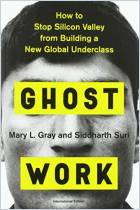Join getAbstract to access the summary!

Join getAbstract to access the summary!
Sarah Mason
High Score, Low Pay
Why the Gig Economy Loves Gamification
The Guardian, 2018
What's inside?
Gamification is taking over the workplace, and if you’re in the gig economy, you are part of it.
auto-generated audio
1×
Log in to listen to the audio summary.
auto-generated audio
Recommendation
Sarah Mason, a Lyft driver and sociologist, forensically examines management controls in the ride app industry. Based on her personal experience, she shows how companies like Lyft use gamification to motivate drivers. Your driver is actually playing a game – and may be hooked.
Summary
About the Author
Sarah Mason is a Lyft driver and a graduate student studying platform-mediated labor at the University of California.























Comment on this summary